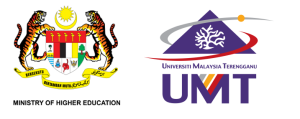Institut Biodiversiti Tropika dan Pembangunan Lestari : The Way Forward
Universiti Malaysia Terengganu is endeavouring to complement its multi-disciplinary and social innovation oriented research capability. Towards that end, the Kenyir Research Institute led at that time by Emeritus Professor Dr. Faizah binti Mohd Sharoum was established at the end of 2013. The excellence was continued under the leadership of Professor Dato’ Dr. Mohd Tajuddin bin Abdullah starting from 1 October 2016. It is the aspiration of Universiti Malaysia Terengganu to fulfill the commitment of the state government to make Kenyir the top “nature tourism destination” in the region as a model of a rural development area from the perspective of environmental sustainability and social well-being.
The importance of Kenyir Lake for biological diversity, aquatic resources, knowledge tourism, socio-economics, as well as the unique cultural heritage of the local community, provides a wealth of research opportunities to support the Kenyir Research Institute’s development into the country’s premier research centre.
The Federal Government is fully supportive of this noble cause and channels funds for the development of the Kenyir Research Station, which looks set to be a centre for education and research in Southeast Asia. For example, the rich biodiversity around Lake Kenyir has attracted biologists from the institute to conduct taxonomic and ecological research to help conserve its biodiversity. The uniqueness of Lake Kenyir, which preserves the treasures of the Mesolithic community in Bewah Cave, can also inspire visitors to understand the richness of the natural heritage in Lake Kenyir.
Kenyir Lake covering an area of 260,000 hectares, is the largest man-made lake in Southeast Asia and has been deemed suitable for development as a National Geopark. Accordingly, Universiti Malaysia Terengganu has undertaken research projects with the collaboration of several federal and state agencies.
With the full support of Terengganu State Government, it is hoped that Kenyir Lake and the surrounding tropical forest will be recognised and acknowledged as a Global Geopark by UNESCO, just like Langkawi in Kedah. The biodiversity of the lake area consists of 233 species of flowering and non-flowering plants, 22 species of small mammals, 53 species of large mammals, 43 species of bats, 285 species of birds, 62 species of freshwater fishes in rivers and 13 species of fishes in lake.
The establishment of the Kenyir Research Institute (see chart below) is the aspiration of Universiti Malaysia Terengganu to fulfil the state government’s commitment to make Lake Kenyir the top “nature tourism destination” in the region from the perspective of contributing new knowledge to ensure environmental sustainability and social well-being of people living around Kenyir Lake.
Research Focus:
1. Canopy Biology
2. Biodiversity and Conservation Biology
3. Wetland and Island Biogeography
4. Human Resources Development
5. Cultural Heritage
6. Socio-economic Development
7. Edutourism and Ecotourism
8. Entrepreneurship Development
9. Research of Geopark Tasik Kenyir

